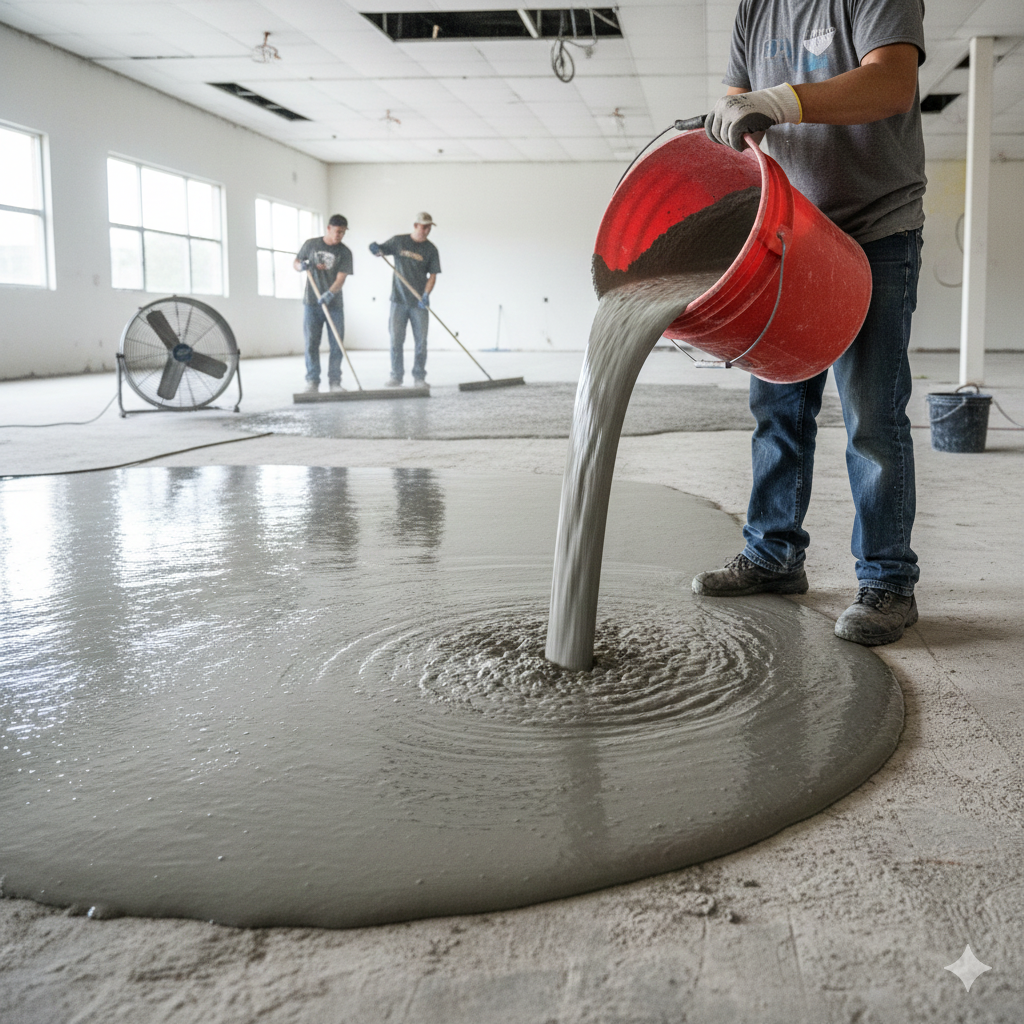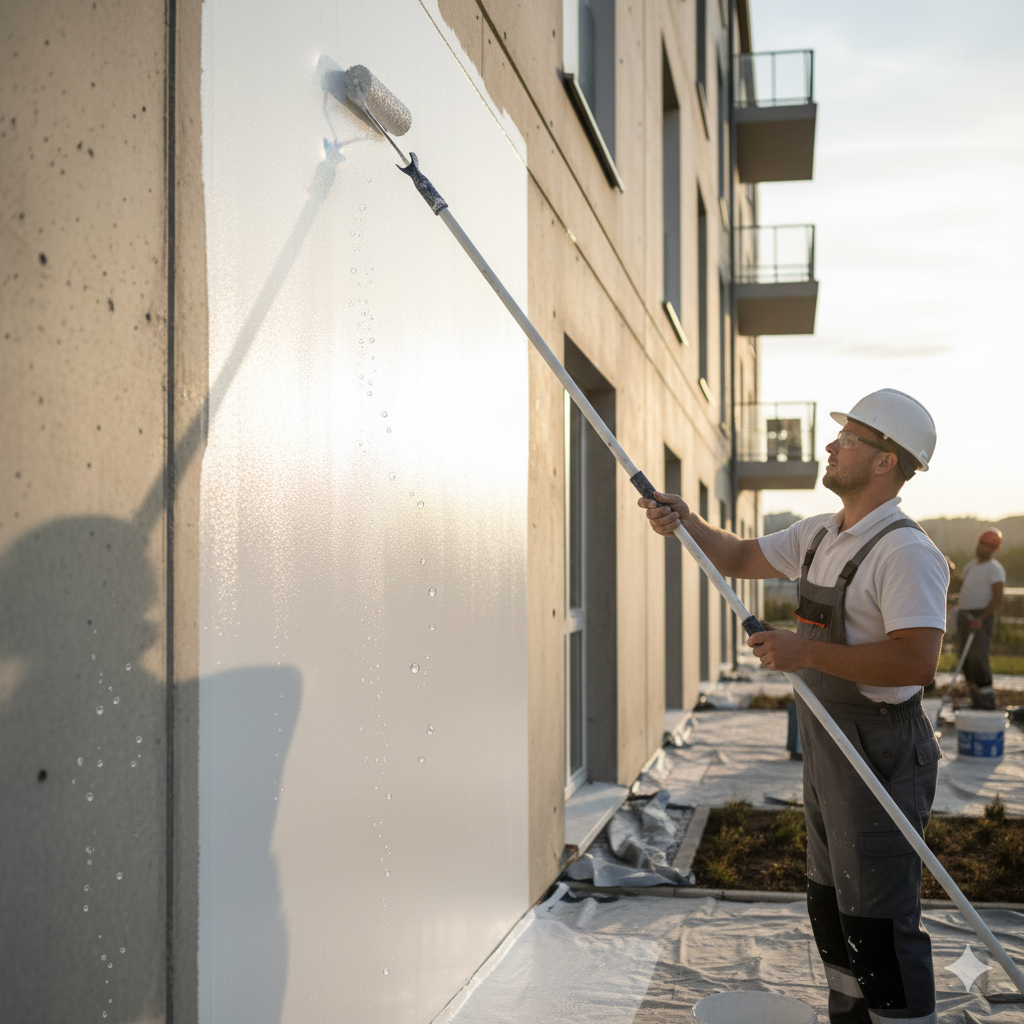
Swimming Pool Waterproofing Material: Building a Leak-Free Structure That Lasts Decades
A swimming pool is more than a luxury—it’s a contained body of water constantly fighting pressure, temperature shifts, and chemical exposure.
Concrete, by nature, is porous and cracks over time. Without proper waterproofing, those microscopic pores soon become invisible leak paths, leading to water loss, structure damage, and costly maintenance.
That’s why swimming pool waterproofing material isn’t an accessory—it’s the backbone of pool integrity.
1 | The Hidden Pain of Leaking Pools
A small leak can cause big losses.
Beyond wasted water, leakage creates:
-
Structural corrosion from water seeping into reinforcement steel.
-
Tile debonding caused by trapped vapor and back pressure.
-
Chemical damage from pool disinfectants degrading materials.
-
Rising humidity leading to mold growth around walls and decks.
Once leakage occurs, surface repair rarely lasts long. True prevention starts before the first drop of water enters the pool.
2 | How Pool Waterproofing Works: From Structure to Seal
Effective waterproofing materials address both positive pressure (inside water) and negative pressure (outside groundwater).
They function by forming an impermeable yet elastic layer between the concrete shell and finish layer (such as tiles).
| Component | Function | Performance |
|---|---|---|
| Cementitious base slurry | Seals pores & hairline cracks | Pressure resistance ≥ 1.5 MPa |
| Polymer modifiers | Provide flexibility | Crack bridging ≥ 1 mm |
| Hydrophobic fillers | Repel liquid water | Water absorption < 0.1 kg/m²·h |
| Chemical additives | Resist chlorine & pH | Stable up to 60°C water temperature |
When mixed and applied correctly, this coating chemically bonds to the concrete, forming a watertight, durable, and breathable shield.
3 | Comparing Pool Waterproofing Systems
| Type | Composition | Strengths | Limitations | Ideal Use |
|---|---|---|---|---|
| Cementitious Slurry | Cement + polymer | Breathable, easy to apply | Requires top tile finish | Reinforced concrete pools |
| Polyurethane Coating (PU) | Two-component resin | Flexible, seamless | UV-sensitive if exposed | Overflow or rooftop pools |
| Epoxy Resin System | Pure epoxy blend | Chemical resistant, glossy finish | Rigid, not crack-tolerant | Indoor decorative pools |
| PVC / HDPE Membrane | Synthetic sheets | Uniform film, high tensile | Complex joint welding | Large-scale commercial pools |
YUNYAN’s cementitious waterproofing series integrates polymer flexibility with crystalline sealing, delivering both adhesion and long-term chemical stability for pool environments.
4 | Key Engineering Principles for Reliable Waterproofing
1️⃣ Adhesion First — the coating must bond fully to the concrete; weak adhesion leads to blistering.
2️⃣ Elasticity Under Pressure — as the pool expands and contracts with temperature, coatings must bridge micro-movements.
3️⃣ Chemical Resistance — pool water contains chlorine, salts, and acids that can degrade standard coatings.
4️⃣ Layer Integration — waterproofing, tile adhesive, and grout must be compatible in composition.
A well-engineered waterproofing layer becomes a structural component, not just a finishing product.
5 | Step-by-Step Application Guide
| Stage | Operation | Critical Control |
|---|---|---|
| 1 | Surface cleaning & crack repair | Remove laitance, grease, old coatings |
| 2 | Primer application | Enhances adhesion to concrete |
| 3 | Apply waterproof coating (2–3 coats) | Use cross-layer pattern for uniform thickness |
| 4 | Curing period (48–72 hrs) | Prevent premature drying and cracking |
| 5 | Flood test | Maintain full water level for 7 days |
| 6 | Tile laying and grouting | Use flexible adhesive and waterproof grout |
Each step should be executed under proper humidity (<85%) and temperature (10–35°C) for maximum bonding strength.
6 | Real-World Applications
-
Residential pools — two-component cementitious coatings beneath mosaic tiles.
-
Hotel & resort infinity pools — PU hybrid coatings for smooth overflow surfaces.
-
Public aquatics & Olympic pools — crystalline waterproofing for large-scale foundations.
-
Rooftop spas — lightweight, UV-resistant membranes for structural decks.
YUNYAN waterproofing materials are customized per project type—balancing flexibility, chemical resistance, and mechanical stability.
7 | Common Pool Waterproofing Mistakes
-
Using tile adhesive as the waterproof layer (not chemical resistant).
-
Skipping curing before filling the pool.
-
Applying too thin a layer (<1.5 mm dry film).
-
Ignoring negative-side waterproofing from groundwater.
-
Using incompatible adhesives or grouts that compromise bonding.
A leak-proof pool starts from material discipline, not after-the-fact repair.
The Foundation of Every Perfect Pool Is Invisible
The beauty of a pool lies in its clarity—but true reliability lies in what you don’t see:
a seamless waterproof layer beneath every tile, resisting water, pressure, and time.
For detailed product data, case studies, or OEM partnership opportunities, visit YUNYAN’s website.
To consult with our technical engineers or request sample materials, connect via the contact page—and keep your next pool watertight for decades.





